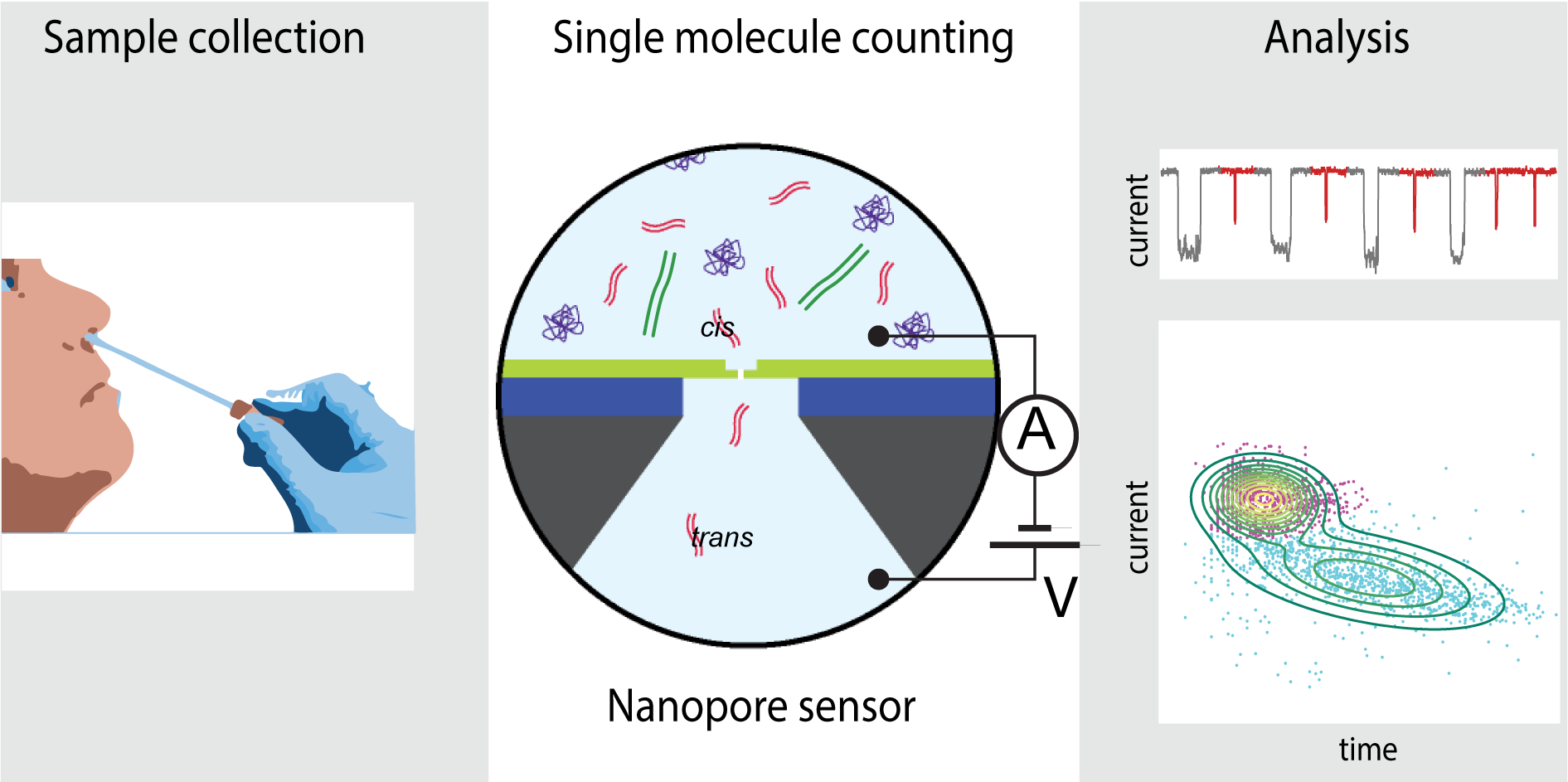Noam presented his final PhD seminar entitled "Single-Molecule Protein Sensing for Early AMD Diagnosis”
In his seminar, he talked about the use of single-molecule sensing technology for early detection of age-related macular degeneration (AMD), a leading cause of vision loss in older adults. Unlike traditional methods that detect physical damage, this approach analyzes molecular biomarkers like VEGF and Clusterin with high precision. Single-molecule techniques, such as nanopore-based sensors or dynamic sensing using nanoparticles, allow real-time tracking of individual protein interactions, enabling ultrasensitive detection at subfemtomolar levels. These methods improve diagnostic accuracy by identifying molecular changes before significant vision loss occurs, paving the way for earlier intervention and personalized treatments. This innovation could transform AMD management, reducing its socioeconomic impact and enhancing patient outcomes.
Our paper on SARS-CoV-2 sensing is out in Nanoscale journal.
In our research, we introduced solid-state nanopore sensing using a compact microfluidic device for label-free quantification of SARS-CoV-2 RNA in clinical nasal swab samples. This research was conducted in Prof. Meller’s lab in collaboration with Dr. Ronit Almog and her staff in the epidemiology unit in the Rambam Medical center. We graded nasal swab samples from >15 subjects and found that the SARS-CoV-2 radiometric nanopore index correlates well with the reported RT-qPCR threshold cycle for positive classified samples. Remarkably, nanopore analysis also reports quantitative positive outcomes for clinical samples classified as negative by RT-qPCR, suggesting that the method may be used to diagnose COVID-19 in samples that may evade detection.
Congratulation to Chen for winning the Jacobs Fellowship!
Chen , A Ph.D. student in our lab, has recently won the prestige Irwin and Joan Jacobs Fellowship. Chen’s Ph.D. research is focusing on single-molecule mapping of DNA epigenetic cancer biomarkers using LNA probes selection and solid-state nanopores. Way to go Chen! Mazal tov! :)
Congratulations to Nitinun for the publication of her Chem Society Review paper
Proteins are the structural elements and machinery of cells responsible for a functioning biological architecture and homeostasis. Advances in nanotechnology are catalyzing key breakthroughs in many areas, including the analysis and study of proteins at the single-molecule level. Nanopore sensing is at the forefront of this revolution. This tutorial review, published on October 17, 2018, provides readers a guidebook and reference for detecting and characterizing proteins at the single-molecule level using nanopores. Specifically, the review describes the key materials, nanoscale features, and design requirements of nanopores. It also discusses general design requirements as well as details on the analysis of protein translocation. Finally, the article provides the background necessary to understand current research trends and to encourage the identification of new biomedical applications for protein sensing using nanopores.





